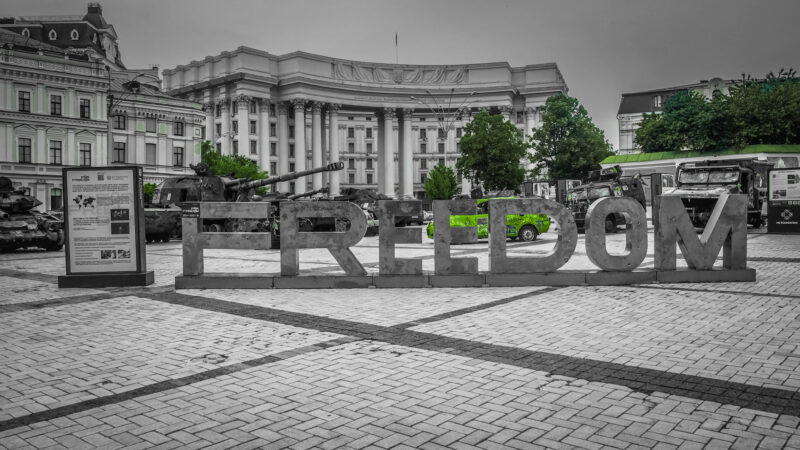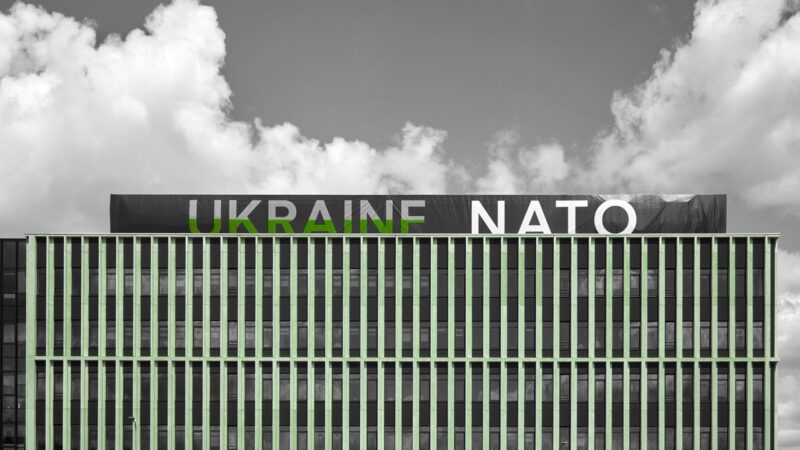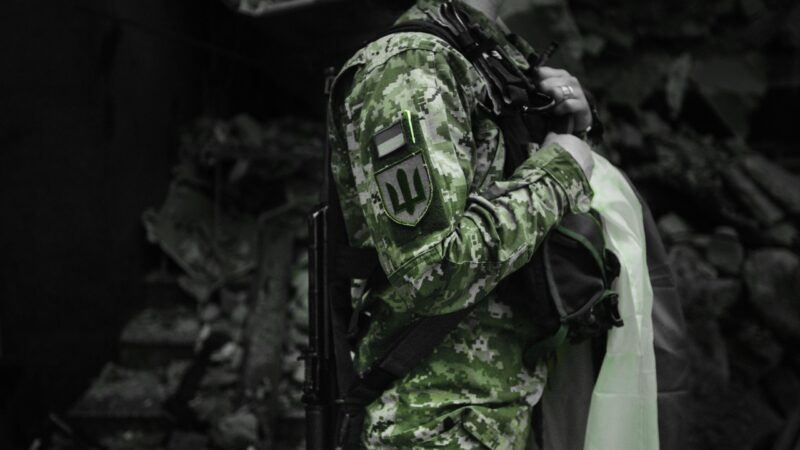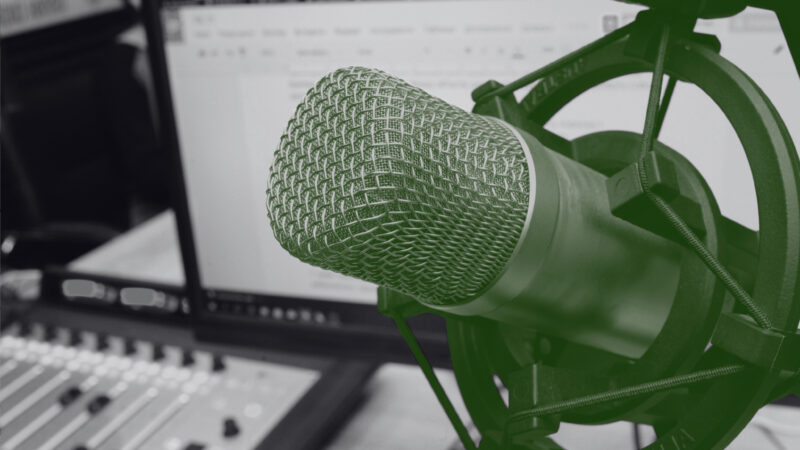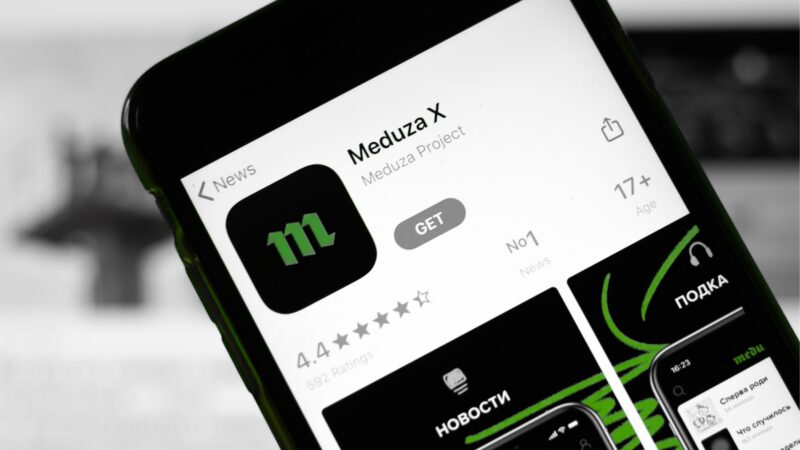Four False Narratives of Russia’s War in Ukraine
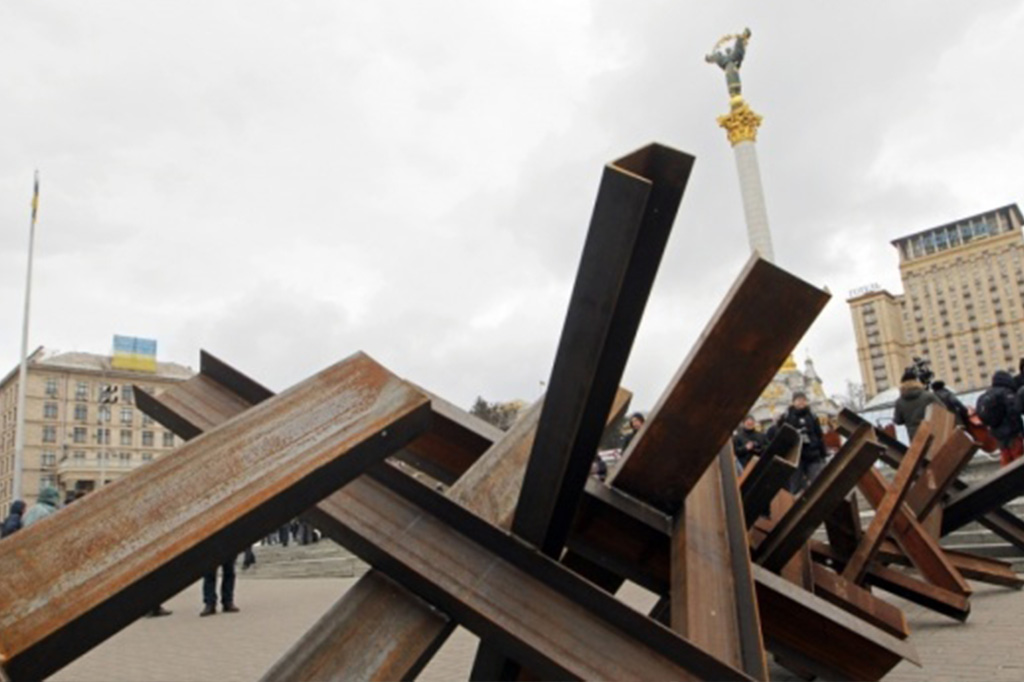
When summing up her impression of Russian President Vladimir Putin, former US State Secretary Condoleezza Rice once said that there was a five percent chance that “he is crazy.” Perhaps she was on to something, although perhaps her estimate was somewhat on the low side. We might find him easier to understand if he really was just “crazy.” Putin unquestionably betrays the traits of a sociopath, but we need more than that to account for his decision to invade Ukraine.
Let us start with what we know for sure. Putin is a backstreet bully from St. Petersburg who made a career as a KGB thug. He is a man with a distorted and malevolent view of history and his place in it. He has made it abundantly clear that he does not accept the post-1991 world. His vision is of a Russia restored to its imperial splendour and a Russia which returns to its long-standing role as the “prison of nations.” He will pursue this dream with all the means at his disposal. However, we have misjudged him. He is not the careful, patient adversary with justifiable objectives, the chess player who deserves our respect. He is a poker player who relies on bluff and lies. He is, moreover, without any kind of empathy for the victims of his ambitions. He accepts no moral or legal restraints on his methods.
This is not a hopeful starting point for any negotiation to end the Russo-Ukrainian war. Before we find the correct balance between relying on credible confrontation and negotiation, we must clear away the misunderstandings that exist about Putin’s motives and objectives. We must therefore confront and counter four pervasive false narratives that cloud our perspective on Russia’s war in Ukraine.
FIRST FALSE NARRATIVE
The Reason for Putin’s decision to invade Ukraine can be traced to mistakes and wrong-headed “imperialist” ambitions on the part of NATO. Despite promises made by the West at the time of the breakup of the Soviet Union not to expand the alliance into the territory of former Soviet republics and Warsaw Pact countries, these commitments were broken. The expansion of NATO has betrayed the legitimate security concerns of Russia.
This interpretation is President Putin’s central contention. The decision by the Ukrainian government to seek inclusion in NATO and the EU was, so he says, an intolerable threat to Russian security. Few buy into this argument, whether partly or wholly, and too many in the West still do. But the argument is false.
On the question of NATO expansion, no promises or guarantees were ever formally made. We can never be sure if there were informal oral promises. The fact that in 2014 the Soviet President, Mikhail Gorbachev, denied that such assurances were ever mentioned or that the subject was ever raised with him, casts serious doubt on the Russians’ allegation that they were ever given. As Gorbachev said: “The topic of NATO expansion was not discussed at all and it wasn’t brought up in those years. I say this with full responsibility. Not a single East European country raised the issue, not even after the Warsaw Pact ceased to exist in 1991. Western leaders didn’t bring it up either.”
Anyway, if there were informal assurances, they became redundant after formal undertakings were concluded between Russia and NATO—especially the 1997 “Founding Act on Mutual Relations, Cooperation and Security,” which makes clear that Russia accepted that expansion of the alliance posed no security risks to Russia and that “NATO and Russia do not consider one another adversaries.”Russia also undertook formally, in the Budapest Memorandum of 1994 and in the Treaty of Friendship and Co-operation with Ukraine in 1997, to guarantee the sovereignty and territorial integrity of Ukraine.
The small, even token, presence of NATO in the Baltic countries and the generally low profile and weakness of NATO’s capabilities throughout Europe show the consistently defensive posture of the alliance. In fact, the perceived weakness and lack of resolve on the part of NATO have probably played a part in Putin’s decision to attack Ukraine by highlighting not a growing threat posed by NATO but rather its fecklessness. Such a perception is no doubt reinforced by the overall impression of the weakness and “decadence” of the West. In fact, the driving force for NATO expansion has come not from the alliance but from countries that are themselves anxious to join. This pressure has actually been somewhat resisted by NATO. Bids from Ukraine and Georgia for fast-tracking their membership were not successful, and their applications have remained on the table for years. Meanwhile, the new East European NATO partners are looking for safeguards against Russian aggression and possible renewed Russian domination.
So, are we really to believe that an all-out war was provoked just because at some point in the future Ukraine may join NATO? From the evidence of his statements and actions, the real reason for Russia’s hatred of NATO is clear enough. For Putin, it simply represents the principal obstacle to the reconstruction of his Greater Russia, not a “security” threat in any other way.
SECOND FALSE NARRATIVE
Ukraine is oppressing ethnic Russians and Russian-speaking Ukrainians through a campaign of Ukrainization and “genocide.” The Donetsk and Luhansk so-called People’s Republics are under a murderous assault by Ukraine, and they need help from Russia to resist Ukrainian aggression against Russophones.
Again, some in the West accept this argument, in whole or in part. In reality, however, tensions around language issues have been consistently exaggerated and exploited by Putin and his apologists. The 1991 referendum on Ukraine’s independence after the collapse of the Soviet Union was supported by an overwhelming majority of Russian-speaking Ukrainians. This was true everywhere in the country. Even in Crimea, where Russophones comprised the overwhelming majority, more than half voted for independence for Ukraine. Russian and other minority language rights are guaranteed by Article 10 of the Constitution of Ukraine. Russian speakers are not oppressed. Ukrainian has been designated as the “state language,” which in no way prevents the use of Russian or penalizes people for speaking Russian. Many in Ukraine understand Russian and the language is widely used.
On the other hand, the language laws of 2019 are designed to protect and preserve the status of Ukrainian, not to suppress minority languages. We do not have to look far for the reasons for this concern about the future of the Ukrainian language. Both under the Imperial Russian and Soviet regimes, Ukrainian and other languages were systematically suppressed as part of various campaigns of “Russification.” Consider, for example, what lay behind Tsar Alexander’s Ems Ukase of 1876, which banned the Ukrainian language in belles lettres and education and otherwise restricted its use. The edict stated that Ukrainian language “has never existed, does not exist, and shall never exist in the future.”
One might well think it strange that something that needs to be banned because it is politically dangerous nevertheless “does not exist.” During most of the years under Soviet rule, the situation was the same or worse—and not just under the nightmare of the Stalin regime. A multi-dimensional campaign of Russification was in place throughout most of the Soviet period. The Kremlin’s repression of Ukrainian language was a central part of that campaign. As just two of many illustrations, the Soviet language laws in the Brezhnev era made Russian the sole language of instruction in education, and there was next to no publication in the Ukrainian language.
The claim that Russians and Russian speakers are suffering under Ukrainian rule is surely fully discredited by now. By contrast, the last vestiges of a free press, freedom of assembly, and free expression have disappeared from Putin’s Russia. Russian speakers in Ukraine have much more freedom of expression than Russians living in Russia. In Kharkiv, Mariupol, and other majority Russian-speaking parts of the country, resistance to the invasion has been as fierce as in predominantly Ukrainian-speaking areas. And let us not forget, of course, that in 2019 more than 73% of Ukrainian voters elected a Russian-speaking Eastern Ukrainian as their President. Ironically, Putin’s brutal unprovoked war has united Ukrainians even further, so that now President Zelensky enjoys something close to universal approval in Ukraine. Meanwhile, the original 2014 “separatist” uprising in Eastern Ukraine was provoked by Putin and is supported, led, and actually partly manned by Russians from Russia. Given the appalling economic conditions in these territories, it is unlikely that language issues are at the forefront of popular worries.
THIRD FALSE NARRATIVE
Russia’s attack on Ukraine was motivated by Putin’s determination to rid Ukraine of “fascists” who pose a threat to Russian speakers and to Russia. Ukraine had to be “de-Nazified” and the Zelensky government and the Nazis around him removed and brought to justice.
Again, most people dismiss such suggestions as nonsense. Yet there are some disingenuous commenters from both Right and Left who for their own reasons are prepared to countenance this claim. Certainly there are extreme right wing forces at work in Ukraine, but their importance for Ukrainian political life has so far been minor and the extreme right attracts only a small part of the Ukrainian people—a much smaller proportion, in fact, than the far-right enjoys in many other European countries.
In 2019 more than 73% of Ukrainians voted for an Eastern Ukrainian, Russian-speaking Jew—whose grandfather, by the way, was a Holocaust survivor. Leaving aside the question of where to draw the line between radical nationalists and fascists, we note that the presidential candidate Ruslan Koshulynsky, who represented the Right Sektor, Svoboda, and several other right-wing groups, polled at only 1.6%. Subsequently, in the elections to Ukraine’s parliament, the Verkhovna Rada, far-right parties gained less than 2% of the vote, reflecting a continuation of the decline of support for these parties from the results of the 2012 and 2014 elections. At the same time, Volodymyr Zelensky’s “Servant of the People” party gained 254 of 450 seats and formed a majority government. The incumbent prime minister was Volodymyr Groysman, a Jew like Zelensky. To say the least, this would be a very strange formula for Nazism. On the other hand, the extremes of the authoritarian Putin regime fits a fascist model quite well—including its murderous treatment of any opposition, destruction of freedom of expression and freedom of assembly, imperialist foreign policy, and viciousness of its unprovoked aggression.
FOURTH FALSE NARRATIVE
Ukraine is not a real country. It belongs with Russia as part of a Great Russia and “Russkii Mir.” There is no Ukrainian people, no language, no separate history. Ukraine is an entirely artificial creation of Soviet governments under Lenin and then Stalin.
The core element…is getting the West to treat Russia as if it were the Soviet Union, a power to be respected and feared, with special rights in its neighborhood and a voice in every serious international matter. The doctrine holds that only a few states should have this kind of authority, along with complete sovereignty, and that others must bow to their wishes…And the doctrine is tied together by Putin’s overarching aim: reversing the consequences of the Soviet collapse, splitting the transatlantic alliance, and renegotiating the geographic settlement that ended the Cold War.
This is Putin’s expressed position, and sadly there are those in the West who agree with him. However, objectively there is absolutely no question that Ukraine has its own language, which has been spoken for centuries and differs from Russian at least as much as Dutch differs from German. Ukraine’s strong literary tradition was cemented in place in the 19th century by numerous Ukrainian writers and pre-eminently by the great poet and patriot Taras Shevchenko. After Shevchenko, no one can credibly claim that Ukraine does not have a language of its own.
There is no space here to review Ukraine’s history at any length. But it is simply a fact that Ukraine has a state tradition which extends back more than a thousand years. In the modern era, a state emerged after the collapse of the Russian and Austrian empires at the end of the First World War. That state had a democratic constitution which aspired to consolidate Ukraine and separate it once and for all from Russia. However, with no sufficient and lasting support from the outside world, the new state finally succumbed to the superior power of Bolshevik Russia.
***
Ultimately, there is one sliver of truth in Putin’s view of Ukraine. Ironically, with the Second World War it was Soviet power that drew together Ukrainian lands—pre-war Soviet Ukraine and Polish-occupied Eastern Galicia—into one geographic entity. Although the resulting consolidated Ukrainian SSR was to be completely subservient to Moscow, the groundwork was thereby unwittingly laid for the re-emergence of an independent Ukrainian state. It is not at all to credit Lenin and the early Bolsheviks with creating Ukrainian national consciousness. Rather, it is true that, unlike most other Russian rulers, Lenin acknowledged its reality. After the Bolshevik seizure of power and the conquest of the independent Ukrainian National Republic in 1921, Lenin set out to “domesticate” Communism in Ukraine He recognized that the new Communist regime had to adjust to the realities of Ukrainian national consciousness and national aspirations. So, in 1923 at the XII Party Congress a policy was launched that was designed to disarm nationalism as an enemy of Communism in Ukraine and in other non-Russian parts of the old empire.
As it applied to Ukraine, the officially approved “Ukrainization” program involved the promotion of Ukrainian language and recruitment of Ukrainians into the institutional life of Soviet Ukraine. The policy survived through the 1920s but was revoked by Stalin and replaced by the Bolshevik totalitarian terror state with its mass murder of Ukrainian intellectual, political, and religious leaders and its genocidal campaign of planned starvation against Ukrainian farmers. The Ukrainization policy had worked too well from Moscow’s point of view and had in fact backfired, as Ukrainian national feeling and desire for autonomy came to be expressed even by the Communist Party of Ukraine.
The experience of the 1920s provides a clear reminder that in Ukraine, national consciousness, tolerance of diversity, and the demand for political, religious, and human rights are grassroots social values that can only be restrained by brute force. Stalin provided that brute force. Inevitably, with the end of Stalin and Stalinism civil society began to revive in Soviet Ukraine. It should have surprised no one that as the strength of Soviet state power continued to wane, the end result would be an independent and democratic society. That society has now had the experience of more than thirty years of independent national and democratic development. The Orange Revolution of 2004, the Revolution of Dignity of 2014 (Euromaidan), and the heroic resistance of Ukrainians to Putin’s invasion in the eight years since provide the proof that now, even a new Stalin would not succeed in destroying that society and the unwavering aspirations which nourish it.
